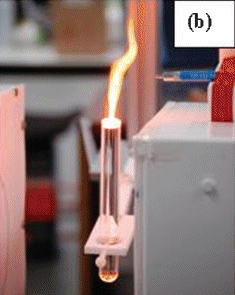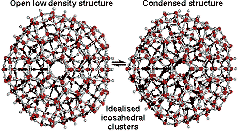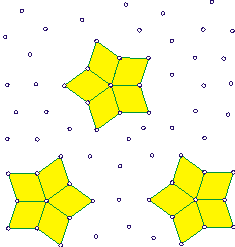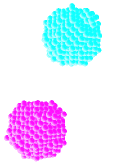
In my opinion the origin of this phenomena is more trivial and it's closely related to memory properties of water, which manifests by number of anomalies, like water autothixotropy(1), Mpemba effect, homeopathic activity of various drugs and chemicals in minute concentration etc. which are based on oligomerisation of water into form of rigid water clusters of icosahedral symmetry. The water cluster formation is based on the finding of X-ray spectroscopy, there exists only two hydrogen bridges available per molecule, so that the formation of chained flat structures simmilar to sponge or foam is preffered. Some observations indicate, the salt ions dissolved may increase surface energy during water clusters and foam formation.

Note the close connection of icosahedral water clusters to sacred geometry of five elements, where the icosahedron shape is assigned just to water element, which could mean, vedic authors have general information about five-fold structure of fluids, the structure of glass and water clusters in particular.

Interesting aspect of quantum behavior of water clusters is their shape memory, which originates from quantum mirage phenomena. The conformal change of shape in particular place of cluster surface is followed by redistribution of charge density, so that the molecules of water are attached/removed to cluster from opposite side in such a way, the original cluster shape is retained like of piece plasticine, although it undergoes rapid Brownian motion as a whole. In AWT analogous mechanism keeps the shape of particles during their travel through vacuum foam.

From the above reasons, each water cluster propagates through density fluctuations of water like solid body of much large effective mass, then the single water molecule - so it can absorb energy in radiowave frequency energy density range (13 MHz, i.e. 5.10E-8 eV). During mutual collisions of such larger clusters the cavitation and splitting of water molecules may occur as a result of anti-Stokes scattering and various resonance phenomena. As a macroscopic demonstration of anti-Stokes scattering can serve famous Astroblaster toy and/or jet formation during water splash, explosion of cumulative warheads (bazooka) and/or collapse of black holes and supernovae (compare the recent simulations of "super rebound" effect during cluster collisions). The main trick here is, the energy of cluster surface waves affects the total bilance of translation energy during collision. Such resonance can have it's analogy in explanation of cold fusion for clusters of deuterons dissolved in palladium lattice.

The electrolysis of salty water by radiowaves is interesting from practical purposes, because it leads to thermodynamically metastable mixture of hydrogen peroxide and hydrogen gas and it doesn't require cooling, diaphragms and metal electrodes affected by corrosion and surface reactions, which decrease yield during classical electrolysis. In polar organic solvents we can expect analogous reaction mechanism, interesting from preparative perspective. Furthermore we can expect a strong isotope effect here, which may become significant for heavy water production. Therefore the electrodeless electrolysis by radiowaves can have a great future and it's definitely worth of further research - despite it doesn't enable to produce fuel from watter in cheaper way, then classical thermodynamics allows.



Žádné komentáře:
Okomentovat
Poznámka: Komentáře mohou přidávat pouze členové tohoto blogu.